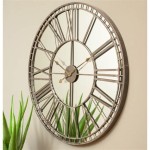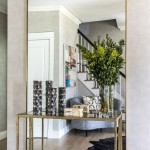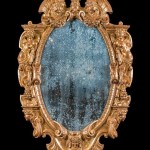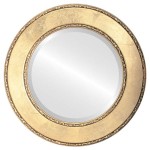How To Hang A Mirror On An Angled Wall
Hanging a mirror on a standard, flat wall is a relatively straightforward task. However, angled walls, often found in attics, lofts, or rooms with unique architectural features, present a distinctive challenge. This article details the necessary steps and considerations for successfully hanging a mirror on an angled wall.
Assessing the Angle and the Mirror
Before commencing, careful assessment of both the wall angle and the mirror's characteristics is crucial. This preliminary step informs subsequent decisions regarding hanging methods and hardware.
- Measure the angle of the wall using an angle finder or protractor. This measurement will be essential for calculating appropriate hardware placement.
- Consider the mirror's weight and size. Heavier and larger mirrors will require more robust hanging solutions.
- Examine the back of the mirror for existing hanging hardware. Some mirrors come equipped with D-rings, wire, or brackets, influencing the chosen hanging method.
Choosing the Right Hanging Hardware
The selection of appropriate hardware is paramount for secure and stable mirror placement on an angled wall. The angle of the wall, combined with the mirror's weight, dictates the most suitable hardware.
- For lighter mirrors on slightly angled walls, specialized angled mirror hangers may suffice. These hangers compensate for the incline, ensuring the mirror hangs flush.
- Heavier mirrors on steeper inclines necessitate more robust solutions. Consider heavy-duty D-rings attached to the back of the mirror, coupled with wall anchors rated for the combined weight of the mirror and the anticipated force exerted due to the angle.
- French cleats offer a secure and versatile hanging method for various angles and weights. These interlocking wooden or metal brackets distribute weight evenly and provide strong support.
- For extremely heavy mirrors or significantly angled walls, consulting a professional installer is recommended.
Preparing the Wall and the Mirror
Proper preparation of both the wall and the mirror ensures a successful and secure hanging process.
- Locate wall studs using a stud finder. While not always possible with angled walls, securing hardware to studs provides the most secure mounting point.
- If studs are inaccessible, use appropriate wall anchors rated for the weight of the mirror. Ensure the anchors are compatible with the wall material (e.g., drywall, plaster, concrete).
- Mark the desired mirror position on the wall using a pencil or masking tape. Consider the angle and use a level to ensure the markings are horizontal relative to the floor.
- If using D-rings or wire, measure and mark the placement on the back of the mirror, ensuring they are level and equidistant from the center.
Installing the Hanging Hardware
Precise installation of the chosen hanging hardware is critical for the mirror's stability and security on the angled wall.
- Carefully install the chosen wall anchors or screws into the marked locations on the wall, ensuring they are firmly secured.
- Attach the corresponding hanging hardware (D-rings, French cleat section, or angled mirror hangers) to the back of the mirror according to the manufacturer's instructions.
- Double-check the alignment of the wall-mounted hardware and the mirror-mounted hardware before attempting to hang the mirror.
Hanging the Mirror
With the preparatory steps complete, the mirror can be carefully hung on the angled wall.
- Enlist assistance, especially for larger or heavier mirrors. The additional support helps ensure safe and precise placement.
- Carefully lift the mirror and engage the hanging hardware on the back of the mirror with the corresponding hardware on the wall.
- Once the mirror is hanging, use a level to confirm its horizontal alignment relative to the floor.
- Make any necessary adjustments to the hanging hardware to achieve perfect placement.
Securing the Mirror (Optional)
For added security, particularly in areas prone to vibrations or accidental bumps, consider securing the mirror to the wall with additional measures.
- Small, clear adhesive bumpers placed on the bottom corners of the mirror can help prevent it from shifting or tilting.
- Thin wire or fishing line can be discreetly attached from the back of the mirror to small hooks or screws in the wall, providing additional stability without hindering the mirror's aesthetic.

How To Put A Mirror On An Angled Wall Over Bathroom Sink Vanity

Tilt Mirror On Angled Wall

Working With Sloped Ceilings Thebath Com

How To Hang Art On Slanted Walls Yes A Frame Homes And Attics Can Be Decorated Youhangit

Attic Bathroom Contemporary Terracotta Studio Sloped Ceiling Bedroom Slanted Walls Floating Shelves

Vanity Mirror Under Sloped Ceiling Design Ideas Page 1 Bathroom Loft Black Tile Bathrooms

3 Ways To Decorate Slanted Walls Wikihow

Chende Angled Wall Bathroom Mirror With 2 Big Beveled Edge 28 X36 Large For Decor Stainless Steel Frame Horizontally Or Vertically Hanging Living Room

Working With Sloped Ceilings Thebath Com

Angled Beveled Mirror Frame With Beaded Accents Hamilton Hills








